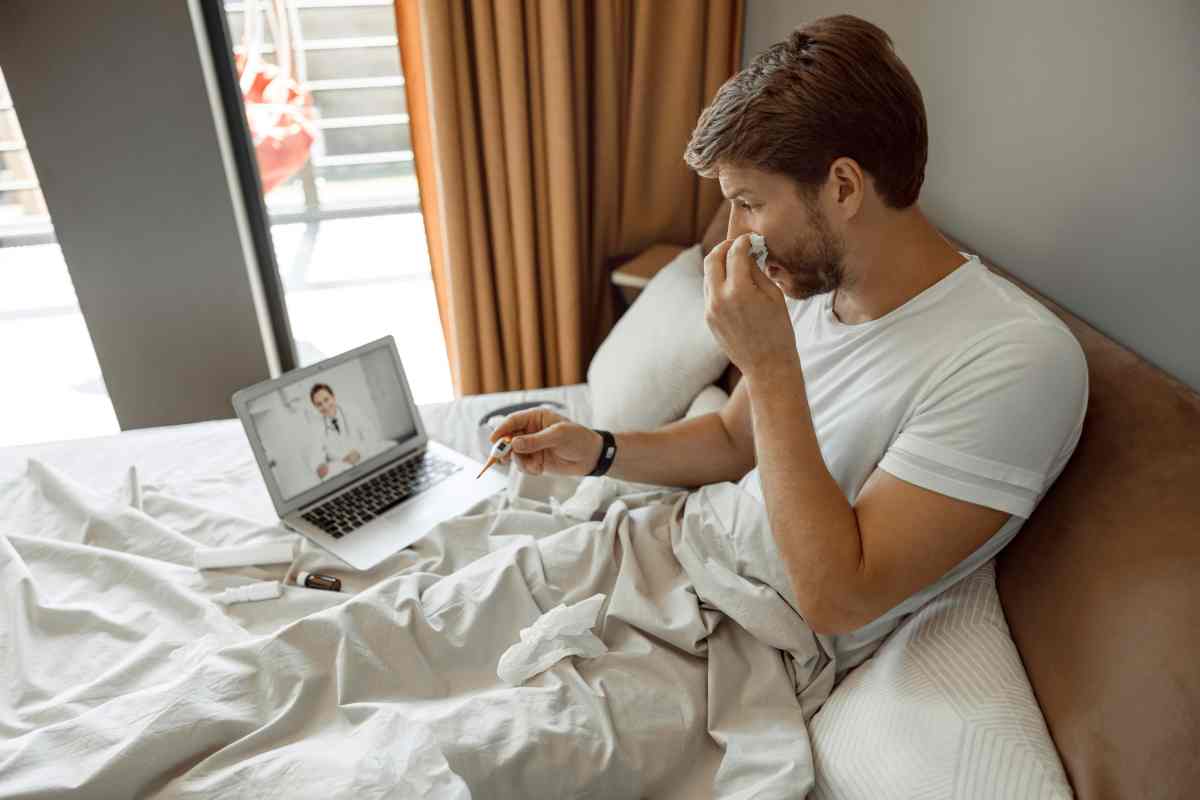As the coronavirus pandemic created the need for doctors to see their patients without potentially contracting or spreading COVID-19 during office visits, many are increasingly turning to telehealth — like Skype, but for healthcare — which provides care remotely through telecommunications technology.
Telemedicine services enable practitioners to collaborate with each other and their patients — for example, transfer and analyze data and images — to treat and monitor patients without physical contact. The technology has been crucial in not only being able to address the needs of the sick but to protect the healthy, too.
“Clearly at a time when you have a large influx of patients with potential for infectious disease, putting them all in a waiting room is suboptimal,” says Dr. Josh Kugler, who chairs the Department of Emergency Medicine at Mount Sinai South Nassau hospital in Oceanside.
Telehealth allows for initial screening to differentiate the need for an emergency room visit due to a broken bone or possible COVID-19, for example.
“If they don’t meet certain criteria, we may take their phone number and call them in their car and use their technology or we could bring them an iPad…and we could set up a queue according to severity,” Kugler says, adding that by utilizing technology, physicians are able to triage and treat effectively without overexposing patients and providers.
The healthcare industry is not new to telehealth. But healthcare privacy laws, limited reimbursement for providers, slower adoption by practitioners, and technical limitations made it an intimidating and/or slow-moving feat before coronavirus.
Upon implementing or updating the scope of their telehealth care, hospitals and medical practices faced challenges from everything from language barriers to entering Medicare and Medicaid telemedicine codes, adoption and comprehension of the technology, and some patients’ reluctance due to their unfamiliarity with the technology. But most if not all of these bumps in the road were promptly addressed. For example, translation technology was utilized to combat language barriers, and the government has lifted regulatory restrictions.
Ultimately, telehealth has provided healthcare experts with advanced capabilities to care for their patients, the benefits of which are invaluable, experts say.
Telehealth adds 24/7 convenience, says Dr. Ken Long, vice president of administration, Mount Sinai South Nassau. Physicians have access to electronic medical records to remotely attend to hospital as well as family practices, even if their physicians have coronavirus. Doctors could easily fill prescriptions following a telehealth visit rather than have their patients run to the ER, for example. And while there’s been a great shortage in personal protective equipment (PPE), telehealth “allows us to conserve masks and gowns,” he says. “We want the practices to stay functional; we don’t want people to get sick.”
Medical professionals at Northwell Health, Long Island’s largest healthcare system, agree.
“With the onset of COVID-19, Northwell Health has leveraged existing capabilities and expanded their capabilities and outreach tremendously,” says Iris Berman, R.N., vice president of Telehealth Services at Northwell Health.
Telehealth has been extremely valuable particularly for the vulnerable and at-risk population, she notes, explaining that a patient with multiple comorbidities, simultaneous chronic diseases that require a number of different specialists to manage their care, would typically require special transportation and visits on any given day to a professional team including a pulmonologist, nutritionist, and physical therapist.
“What we are able to do with telehealth is have all of those specialties at one visit at one time while that patient stays home,” Berman adds.
They are able to coordinate, collaborate, and treat effectively.
“People will see the convenience of it and the efficiency and want to continue this well after the COVID emergency is over,” Berman says. “Getting good data together, looking at those avoided unnecessary and high-cost transfers to the emergency room — conserving more expensive resources for those that really need it — will be something interesting to look at.”
Related Story: How To Boost Your Immune System During The Coronavirus War
For more coronavirus coverage visit longislandpress.com/coronavirus
Sign up for Long Island Press’ email newsletters here. Sign up for home delivery of Long Island Press here. Sign up for discounts by becoming a Long Island Press community partner here.





























